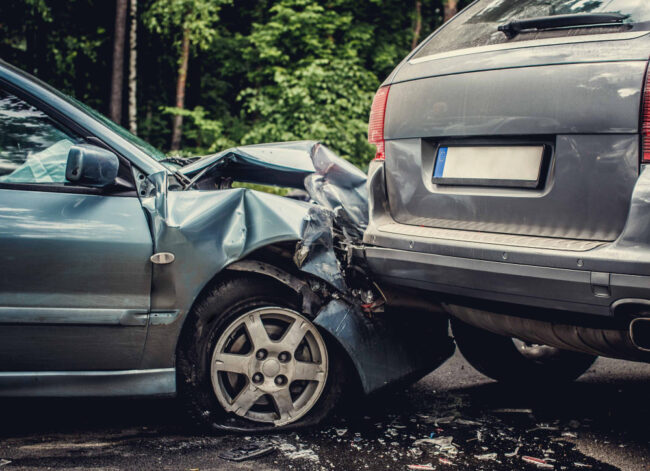In any personal injury case, the role of evidence is crucial—it forms the foundation upon which claims are built and defended. Whether it’s a slip-and-fall incident, a car accident, or a medical malpractice suit, gathering and presenting strong evidence can mean the difference between winning and losing a case. For anyone involved in a personal injury lawsuit, understanding the importance of evidence, the types of evidence that may be needed, and how to properly gather and present it can help in pursuing fair compensation and justice.
Contents
Why Evidence is Essential in Personal Injury Cases
The fundamental goal of any personal injury case is to establish that the defendant’s actions (or inaction) directly caused harm to the plaintiff. To achieve this, a plaintiff must prove:
- Duty of Care: The defendant had a legal duty to act (or refrain from acting) in a certain way.
- Breach of Duty: The defendant breached that duty through negligence or intentional harm.
- Causation: The breach caused the injury.
- Damages: The plaintiff suffered measurable damages, like physical injury, emotional distress, or financial loss.
Each of these elements requires specific types of evidence to demonstrate that the plaintiff’s claim is valid and to quantify the compensation due. Strong evidence also provides leverage in settlement negotiations, as it signals to the opposing party that the plaintiff is likely to prevail if the case proceeds to court.
Types of Evidence in Personal Injury Cases
Evidence in personal injury cases can vary widely, depending on the type of case and the nature of the injuries. However, certain categories of evidence are typically necessary:
- Medical Records and Bills Medical records are perhaps the most critical type of evidence in any personal injury case. They establish that an injury occurred and document its severity and the treatment required. Medical bills, on the other hand, serve to quantify the financial impact of the injury, covering everything from emergency room visits to long-term physical therapy. These records can also demonstrate that the injury is directly related to the incident in question.
- Photographs and Video Evidence Visual evidence is compelling because it provides a direct and often irrefutable view of the circumstances surrounding the incident. Photos of the accident scene, the condition of vehicles after a crash, or visible injuries can substantiate a plaintiff’s claims. In cases involving dangerous premises, photos of hazards like broken stairs or wet floors can clearly demonstrate the conditions that led to the injury.
Video evidence, such as security footage or dash cam recordings, can be particularly valuable. It not only shows what happened but also when and how, making it difficult for the defense to contest the facts. - Eyewitness Testimony: Witnesses who saw the incident can provide firsthand accounts of what occurred. Their observations can corroborate the plaintiff’s story and help clarify the sequence of events, especially in complex cases like car accidents or workplace injuries. Witnesses can be neutral third parties or individuals who were also affected, like co-workers or other drivers involved in the accident.
- Expert Testimony Experts provide opinions that help explain evidence to the court. For instance, a medical expert can testify about the likely causes of the plaintiff’s injuries and any potential future complications, while an accident reconstruction expert can use physics and engineering principles to explain how the accident likely occurred. In cases where causation is complex or technical, expert witnesses can be indispensable.
- Police and Accident Reports In car accidents and certain other cases, police reports can offer an unbiased account of the incident. Officers may document factors like weather conditions, road hazards, or signs of intoxication. Police reports can also include witness statements and citations, which can lend additional weight to the plaintiff’s claims.
- Employment and Financial Records For plaintiffs seeking compensation for lost wages, employment records and pay stubs serve as evidence of income before the injury. If the injury has long-term implications on the plaintiff’s ability to work, expert testimony or employment records may be necessary to calculate projected future earnings and economic loss.
- Personal Journal or Diary Documenting the recovery process in a personal journal can strengthen a case for damages related to pain and suffering. Plaintiffs who detail daily pain, emotional challenges, or loss of enjoyment due to their injuries can make a more persuasive case for compensation beyond medical bills alone.
The Process of Gathering Evidence
The gathering of evidence should begin immediately following an accident or injury. Waiting too long can lead to loss of critical evidence, as physical scenes change, memories fade, and witnesses may become unavailable. Here are some practical steps for plaintiffs:
- Document the Scene: Immediately after the incident, take photos or videos of the scene, injuries, and any surrounding factors that might have contributed to the accident.
- Seek Medical Attention: Even if injuries seem minor at first, a doctor’s examination is essential to document any injuries and establish a medical record from the earliest possible date.
- File a Report: In cases like car accidents or incidents at businesses, filing an official report can create a public record, strengthening the case.
- Keep a Record of Expenses: Beyond medical bills, plaintiffs should retain records of all expenses related to the injury, such as transportation, in-home care, and lost wages.
How Evidence is Presented in Court
In court, evidence must be both admissible and persuasive. The opposing side may attempt to dismiss evidence or challenge its credibility, which is why experienced personal injury attorneys are invaluable in these cases. Attorneys know how to gather evidence lawfully, present it effectively, and counter challenges from the defense. They may use the following techniques:
- Demonstrative Evidence: Attorneys often create visual aids, such as diagrams or animations, to help the jury understand complex evidence, like medical procedures or accident reconstructions.
- Organized Presentation: Presenting evidence logically can make it easier for the jury to follow and connect each piece to the plaintiff’s narrative.
- Objectivity and Professionalism: An attorney’s credibility and professionalism lend authority to the evidence, particularly when cross-examining defense witnesses or challenging opposing evidence.
The Power of Evidence in Settlement Negotiations
While evidence is vital for trials, it’s also critical for settlement negotiations. A well-documented case, complete with compelling evidence, increases the chances of a favorable settlement outside the courtroom. Insurance companies often prefer to avoid trial if they believe the plaintiff has strong evidence that could convince a jury to award significant damages.
Conclusion
In personal injury cases, evidence is the backbone of a successful claim. Plaintiffs must diligently gather, preserve, and present all relevant evidence to substantiate their claims and maximize their chances of winning. With the right evidence, plaintiffs can effectively illustrate the impact of their injuries and secure the compensation they deserve for their pain, suffering, and financial losses. Partnering with an experienced attorney can further ensure that all evidence is strategically used to build a compelling case, bringing plaintiffs one step closer to justice.




